Designing a small bedroom can sometymes feel like solving a complex puzzle. Every inch matters, yet you still want a space that feels inviting and personal—not just practical. Whether you’re in a tiny studio apartment, dealing with an awkward-shaped room, or trying to maximize a guest bedroom, these creative small bedroom ideas will help transform your compact space into a cozy sanctuary that doesnt compromise on style or function.
According to a 2023 survey by the National Association of Home Builders, the average bedroom size in new American homes has decreased by 12% since 2015, making smart small-space solutions more relevant than ever. But don’t worry! Limited square footage doesn’t mean limited possibilities.
Understanding Small Space Psychology

Before diving into specific design solutions, it’s important to understand how our brains perceive small spaces. Research published in the Journal of Environmental Psychology suggests that visual clutter affects our cognitive processing and can increase feelings of stress—particularly in compact areas where there’s no visual “escape.”
“When designing small bedrooms, creating a sense of order becomes even more critical for both visual spaciousness and psychological wellbeing,” explains interior designer Sarah Chen of Tiny Space Solutions. “The goal is to make a room that feels bigger than it actually is while supporting quality rest.”
Studies from the Sleep Foundation have shown that well-designed sleep environments—even small ones—can improve sleep quality by up to 35%. By implementing thoughtful design strategies, your small bedroom can become not just a beautiful space but a healthier one too.
Color Strategies That Expand Visual Space

Light Color Palette Magic
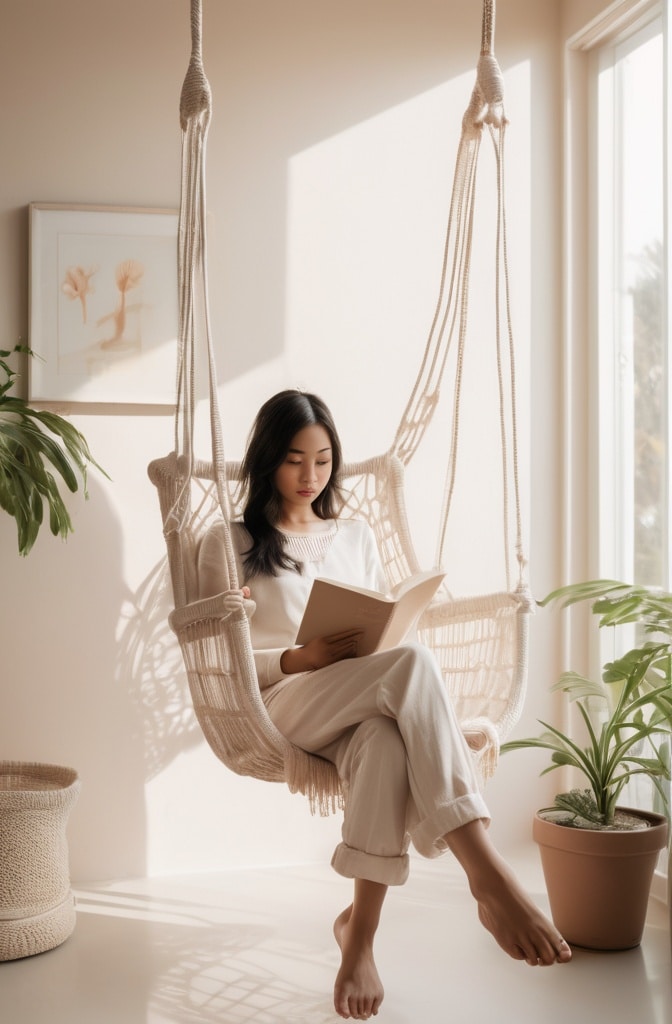
Light colors reflect more light, creating an illusion of expanded space. But that doesn’t mean your small bedroom has to be boring white! Soft whites with warm or cool undertones, pale grays, gentle blues, and light neutrals all work brilliantly to open up a room.
Professional color consultant Kim Lee recommends considering the natural light in your space: “North-facing rooms benefit from warmer whites like ivory or cream, while south-facing rooms can handle cooler whites without feeling stark.”
To avoid a clinical feel, incorporate texture through bedding, window treatments, or a textured paint technique. Even in an all-white room, varying textures create visual interest that keeps the space feeling cozy rather then sterile.
Strategic Accent Colors

Using the 60-30-10 rule (60% dominant color, 30% secondary color, and 10% accent color) helps create balance in small spaces. The trick is to use color intentionally to draw the eye where you want it to go.
“Dark colors don’t always make spaces feel smaller,” notes interior designer Marcus Jordan. “Using a deep color on a feature wall behind the bed can actually create depth, making the room appear larger as long as the adjacent walls remain light.”
Try these unexpected color placements to maximize perceived space:
- Paint the ceiling a shade lighter than your walls to lift the room height
- Use the same color for walls and trim to create continuity
- Add a bold accent color inside shelving or niches to create visual interest without overwhelming the room
Smart Furniture Solutions
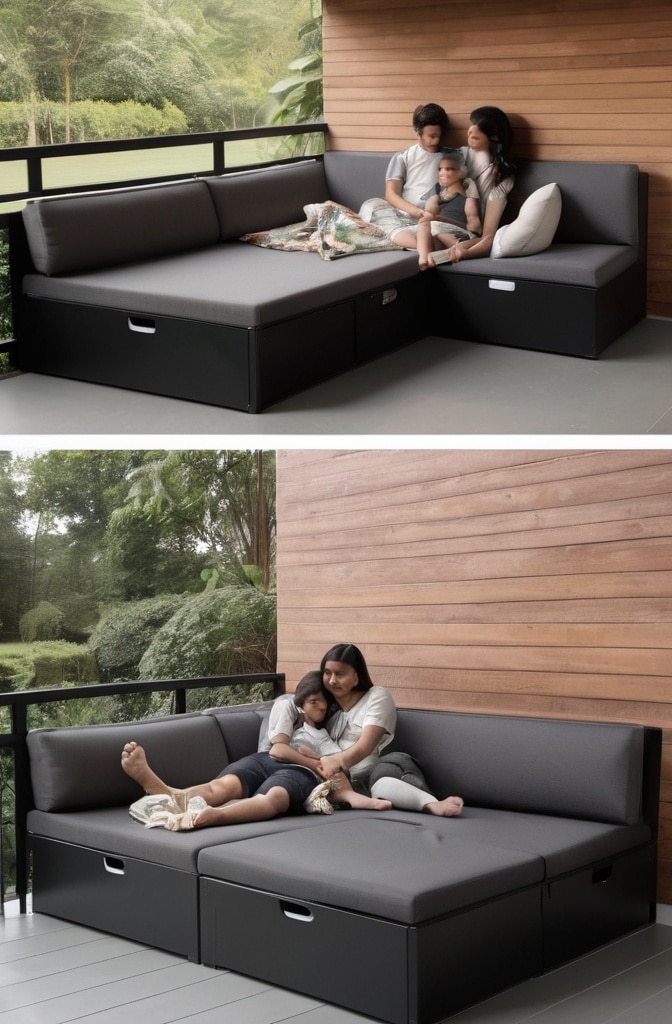
Multi-Functional Furniture Heroes
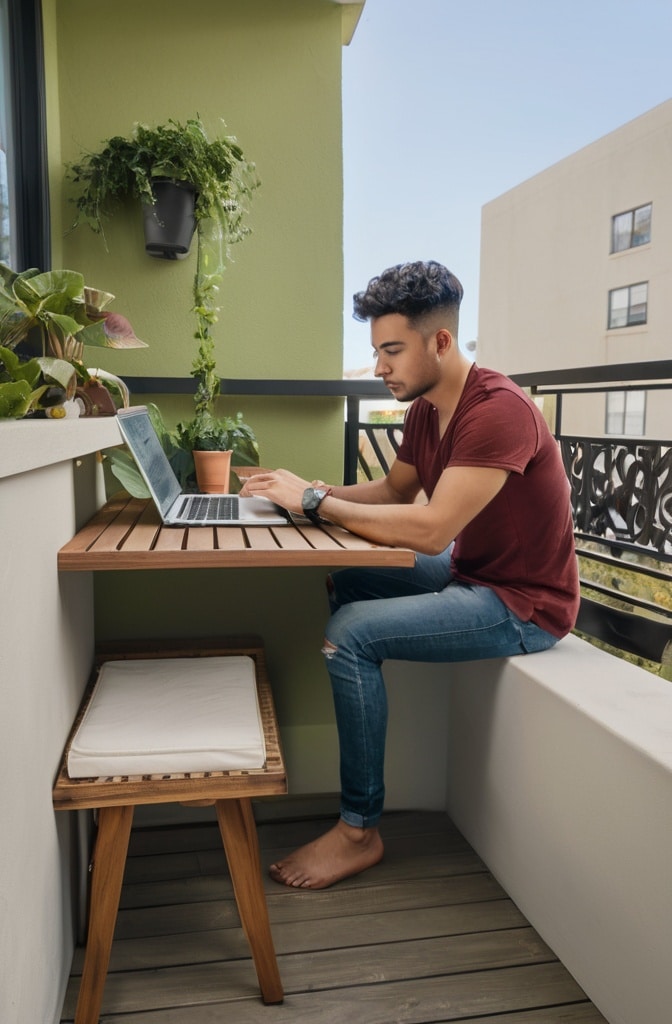
In a small bedroom, every piece should earn its keep by serving multiple purposes. Storage beds are perhaps the most valuable space-saving investment, offering between 4-8 cubic feet of hidden storage—equivalent to a small dresser!
Some particularly clever options include:
- Hydraulic lift storage beds that raise to reveal full-width storage
- Captain’s beds with built-in drawers on the sides
- Headboards with hidden compartments and shelving
- Ottoman beds where the entire mattress platform lifts up
A desk-dresser combination can serve as both workspace and clothing storage. Companies like Resource Furniture specialize in transforming pieces like fold-down desks that become wall art when closed or side tables that expand into work surfaces.
Read This Blog;https://hometranquil.com/living-room-idea/
Compact Furniture Proportions
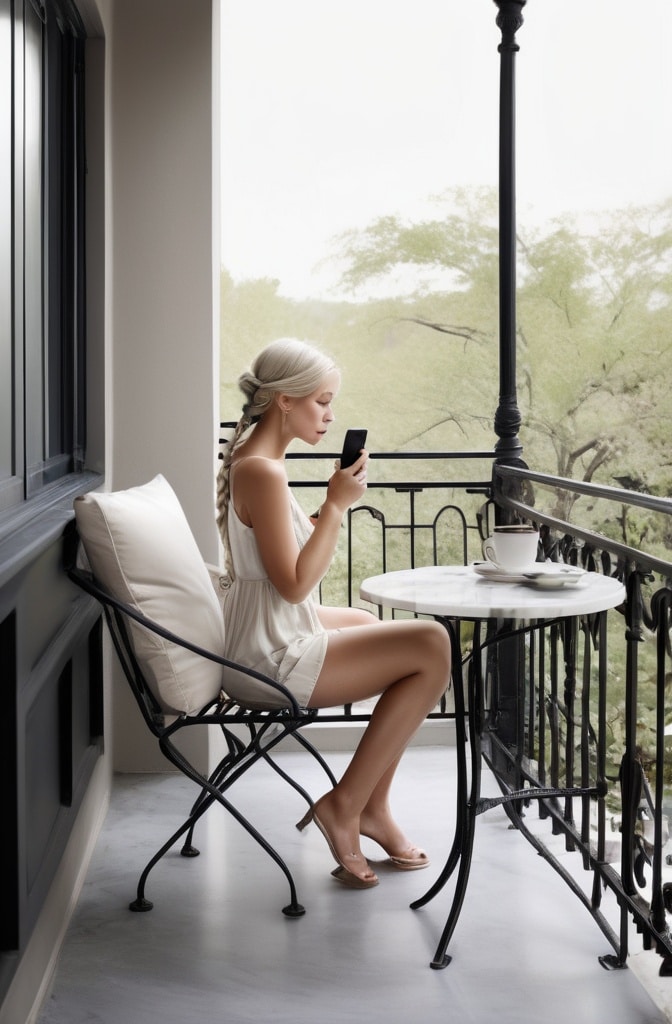
When selecting furniture for a small bedroom, size and scale matter tremendously. The ideal nightstand depth for small spaces is 12-15 inches rather than the standard 20 inches. Look for beds with visible legs rather than box frames to create a sense of airiness.
Interior designer Leah Morgan recommends the “one-third rule” for furniture placement: “Major furniture pieces should ideally take up no more than one-third of the available floor space, leaving two-thirds for movement and visual breathing room.”
Consider these dimension guidelines for small bedroom furniture:
- Bed frame: No more than 5 inches wider than your mattress on each side
- Nightstands: 24 inches tall (mattress height) and 12-15 inches deep
- Dressers: Slim profile (16-18 inches deep) rather than standard (24 inches)
- Chairs: Armless designs with a seat depth of 20 inches or less
Transparent and Visual Space-Saving Pieces
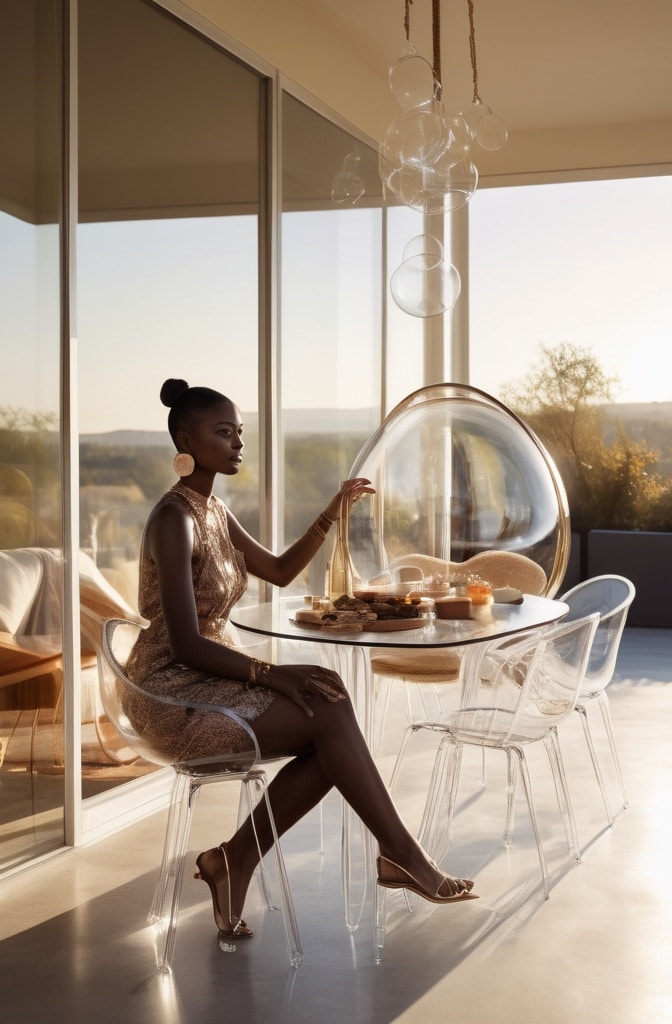
Furniture that you can literally see through creates an illusion of more space by reducing visual weight. Acrylic chairs, glass-top tables, and furniture with exposed legs all help maintain visual flow throughout a small room.
A study in Interior Design Psychology found that rooms with transparent elements were perceived as up to 15% larger than identical rooms with solid furniture. Ghost chairs, glass bedside tables, or lucite console tables are all excelent choices.
Be aware that transparent furniture does require more frequent cleaning—fingerprints and dust show easily. Consider this maintenance factor when deciding if transparent pieces are right for your lifestyle.
Vertical Space Maximization
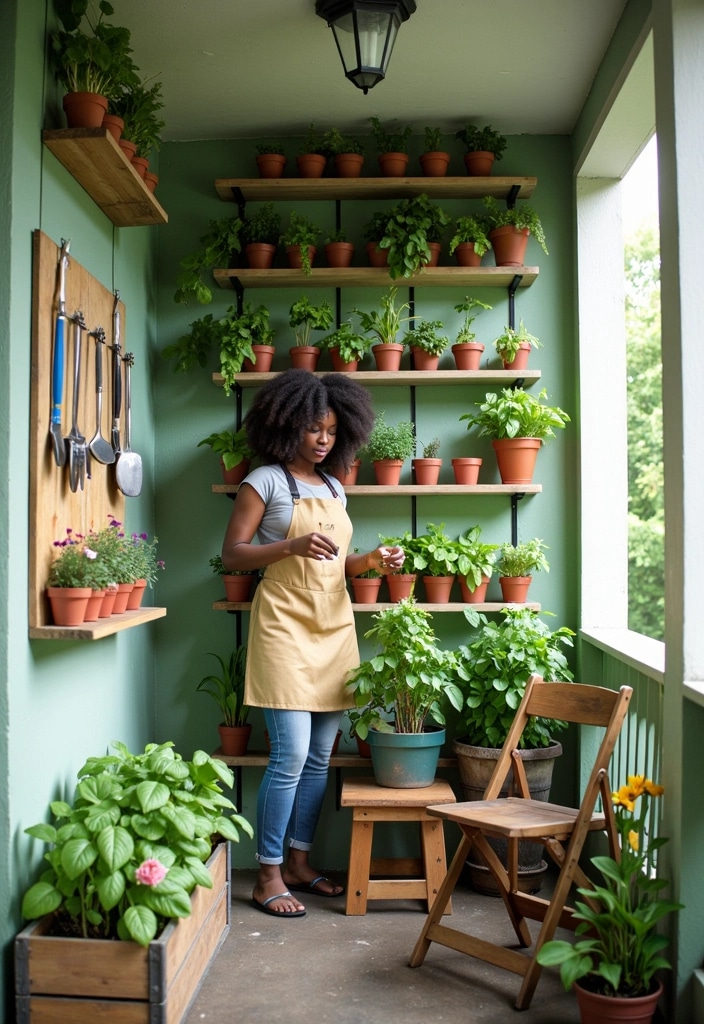
Floor-to-Ceiling Storage Solutions

The average bedroom has 8-foot ceilings, giving you 64 square feet of vertical space on each wall—often severely underutilized! By thinking vertically, you can double your storage without using any additional floor space.
Custom built-ins offer the most efficient use of vertical space but come at a premium (averaging $300-700 per linear foot). More budget-friendly alternatives include:
- IKEA’s PAX system with extension units to reach the ceiling
- Modular stacking cube systems that can grow over time
- Tension rod systems that install without damaging walls
Don’t forget those awkward corners! Corner shelving units or custom corner wardrobes can reclaim otherwise wasted space. For the best visual result, paint built-ins the same color as your walls to create a seamless look that doesn’t interrupt the eye.
Floating Shelves and Wall-Mounted Storage
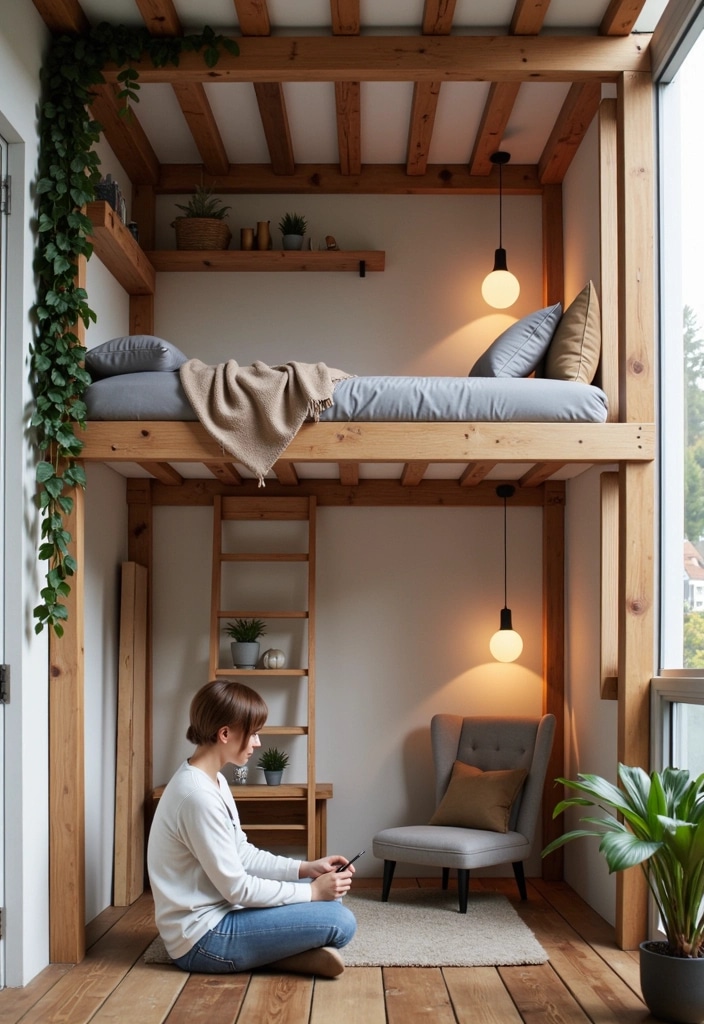
Floating shelves create storage without the visual heaviness of traditional bookcases. For small items, shallow shelves (5-7 inches deep) provide ample space while protruding less into the room.
When installing floating shelves, be aware of weight limits:
- Standard drywall with proper anchors: 5-10 pounds per anchor
- Shelves mounted to studs: 50+ pounds per stud
- Toggle bolts in drywall: 25-50 pounds each
For a polished look, interior stylist Jamie Lin suggests the 70/30 rule: “Keep 70% of your shelving practical and 30% decorative. This balance ensures your storage remains functional without looking cluttered or too utilitarian.”
Loft Bed Configurations
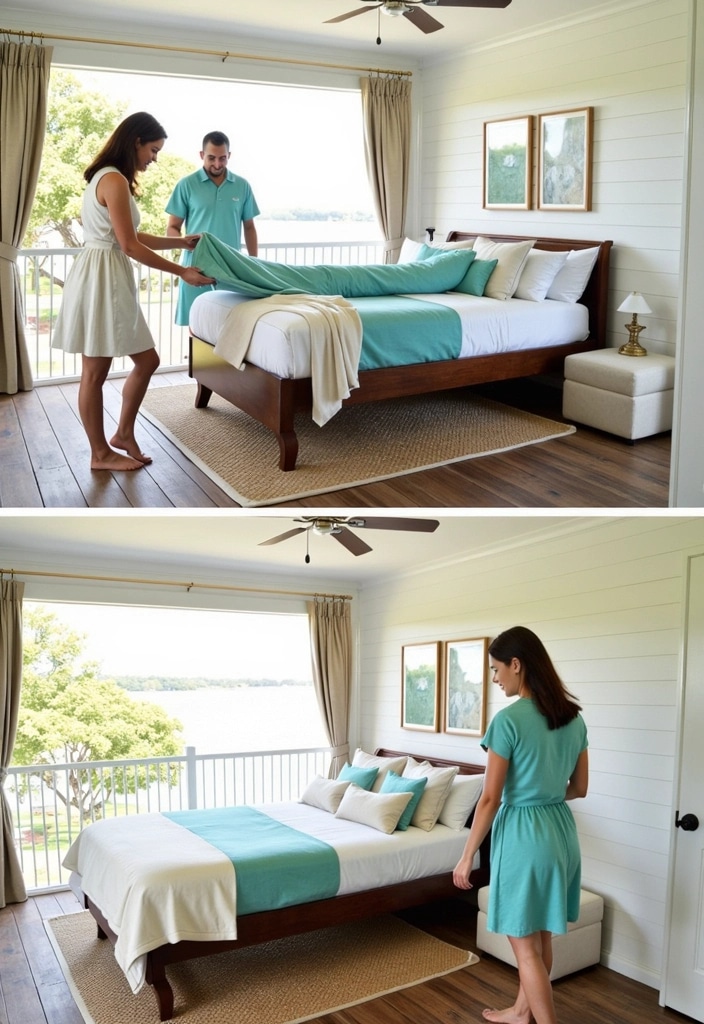
Loft beds elevate the sleeping area to create a whole new zone underneath. This solution works best in rooms with ceilings at least 9 feet high, allowing for approximately 5.5-6 feet of clearance underneath.
According to the International Residential Code, guardrails should be at least 36 inches high on loft beds to ensure safety. For adults, ensure the mattress platform can support at least 300 pounds (more if shared by two people).
The space underneath can be configured as:
- A home office with desk and storage
- A lounge area with seating
- A closet zone with hanging rods and drawers
- A combination of functions with zones
Clever Bed Arrangements
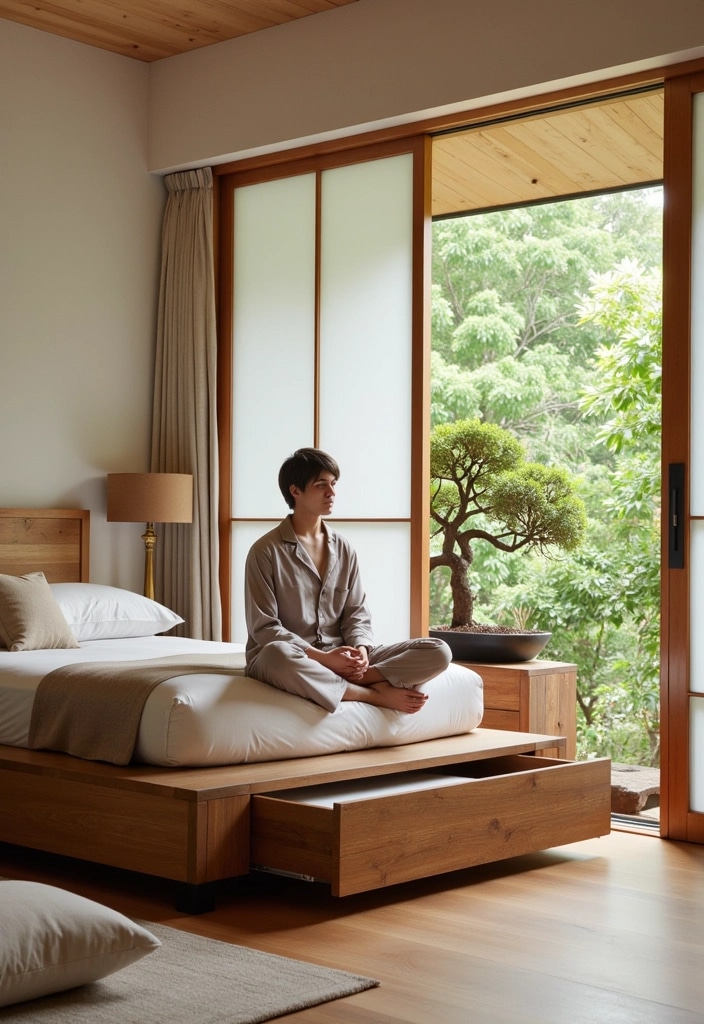
Platform Beds: Form and Function
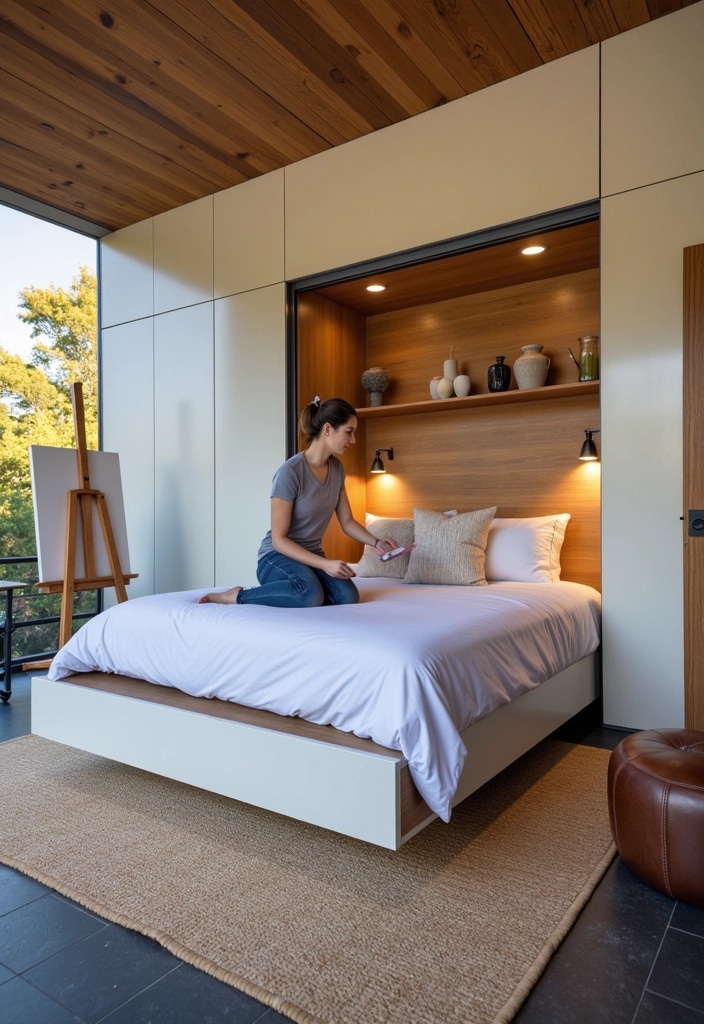
Platform beds sit lower to the ground, creating more headroom and a sense of openness. The clean lines of platform beds align perfectly with minimalist design sensibilities while offering practical advantages for small spaces.
A quality platform bed ranges from $300 for basic models to $1,200+ for designs with integrated storage. DIY versions can be built for as little as $150 in materials. For maximum space efficiency, look for platform beds with:
- Integrated drawers on one or both sides
- Hydraulic lift mechanisms for under-bed storage
- Built-in nightstand extensions
- Headboards with shelving or hidden compartments
The lower profile of platform beds makes them ideal for rooms with low ceilings or for creating zones in studio apartments where visual separation is key.
Statement Headboards That Work Harder
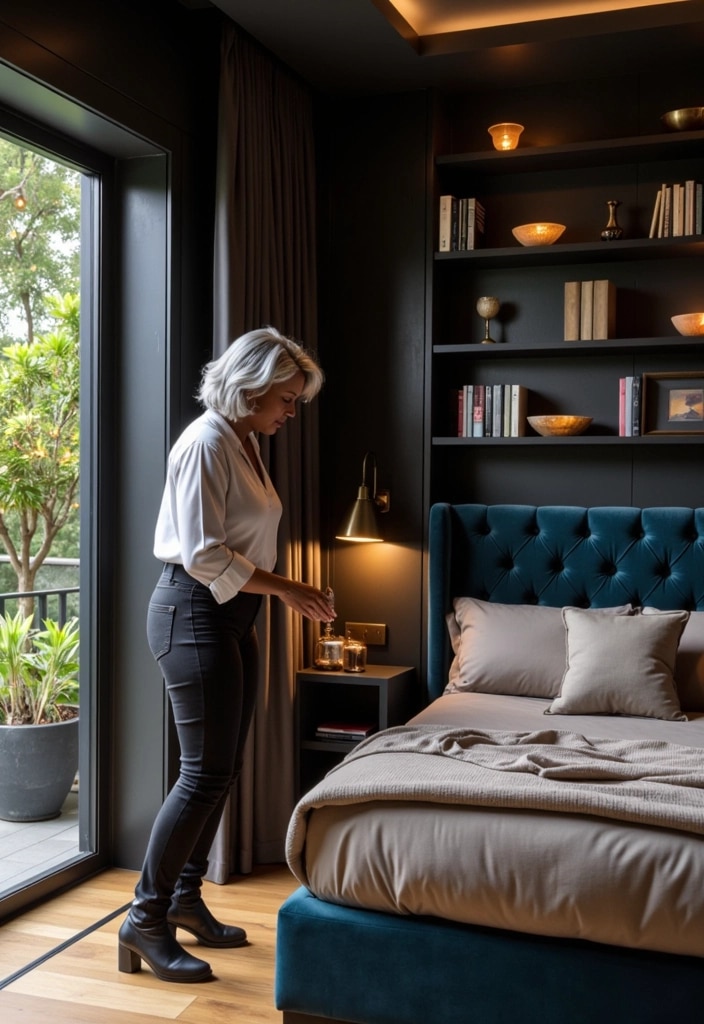
The headboard occupies prime wall real estate—make it work harder by choosing one with built-in functionality! Beyond just looking pretty, headboards can serve as:
- Shelving units for books and decorative items
- Hidden storage compartments for less-frequently used items
- Room dividers in studio apartments
- Sound absorption panels to improve room acoustics
“A statement headboard creates a focal point that draws attention away from the room’s small dimensions,” says designer Elena Rodriguez. “By incorporating storage or display space, you eliminate the need for additional furniture pieces.”
DIY headboard projects can transform inexpensive materials like pegboard, plywood, or even repurposed doors into functional design elements. Fabric-covered headboards with hidden storage typically cost $200-400 in materials but save on the need for nightstands or shelving.
Murphy and Wall Beds for Extreme Space Saving
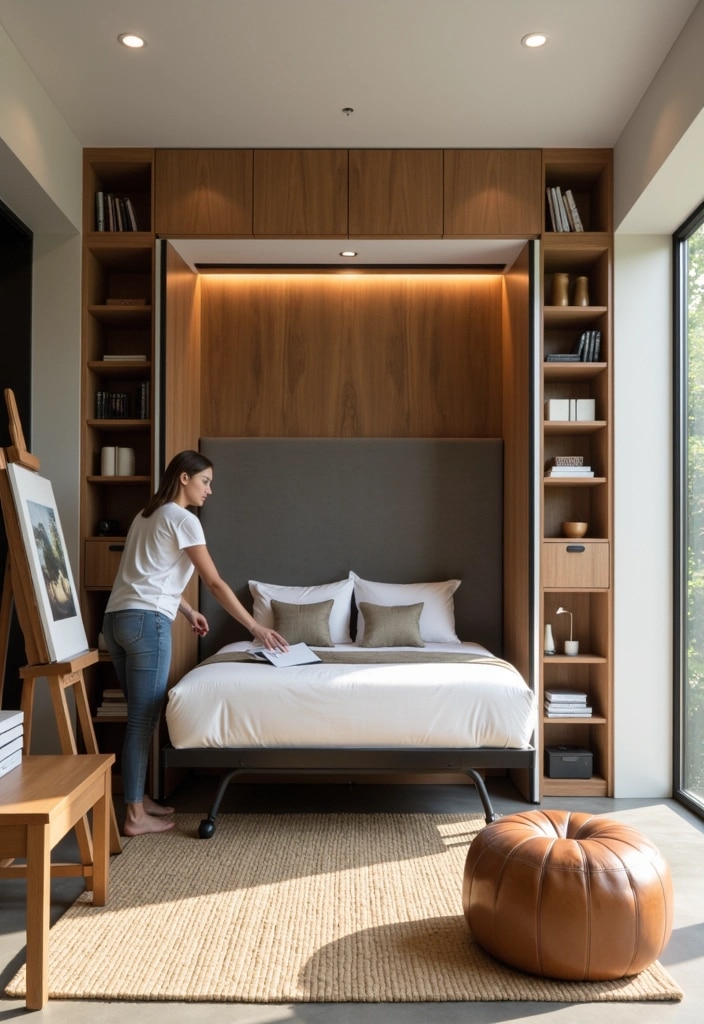
Modern wall beds (also called Murphy beds) have come a long way from their creaky, uncomfortable ancestors. Today’s mechanisms are smooth, quiet, and designed for daily use, requiring just 5-8 pounds of pressure to lower and raise.
While traditional Murphy beds fold up vertically, horizontal fold-out options are excellent for rooms with lower ceilings. High-quality wall bed systems range from $1,500 to $3,000 but represent an investment in essentially doubling your usable floor space during waking hours.
Installation considerations include:
- Wall beds must be anchored to studs or solid masonry
- Most require at least 7 feet of clearance when folded down
- Floor space must remain clear in the bed’s “landing zone”
- Some models incorporate desks or shelving that remain usable when the bed is lowered
Space-Expanding Visual Tricks
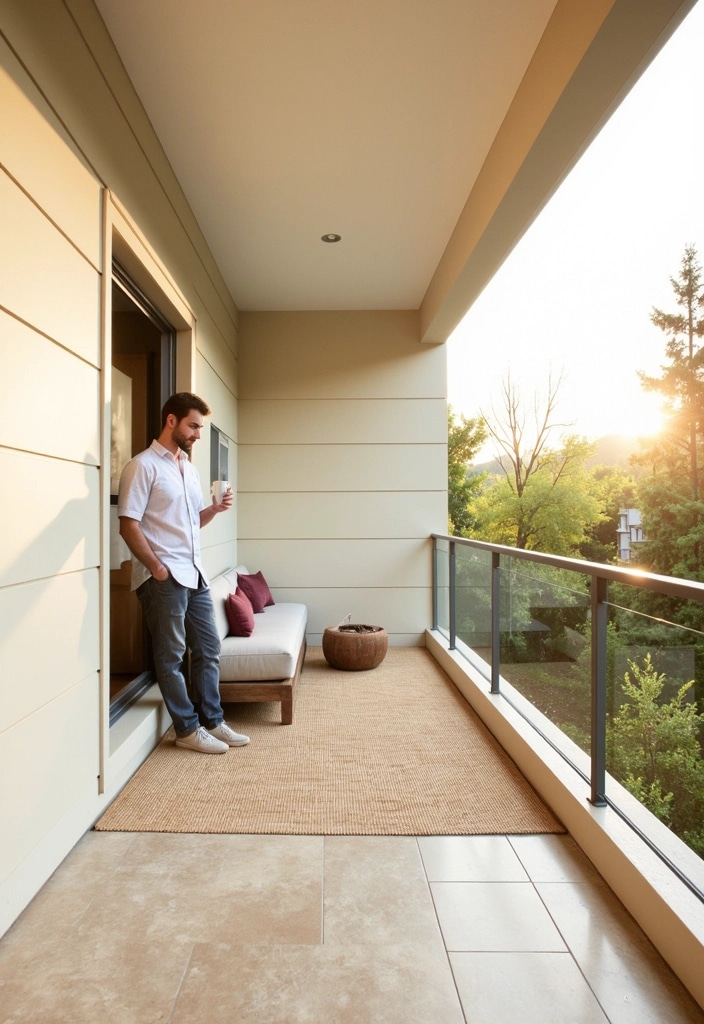
Strategic Mirror Placement

Mirrors are like visual magic wands in small spaces, reflecting both light and scenery to create a sense of expanded space. Placing a mirror directly across from a window can effectively double the natural light in the room.
For maximum impact, interior designers recommend:
- Full-length mirrors on closet doors or wall spaces
- Mirrored furniture like nightstands or dressers
- Gallery arrangements of smaller decorative mirrors
- Ceiling-mounted mirrors in extremely small spaces (though these require professional installation)
“The size of the mirror matters less than its placement,” explains designer Rafael Santos. “Even a medium-sized mirror positioned to reflect a light source or attractive view will enhance the room more than a large mirror reflecting a blank wall.”
Lighting Layers for Perceived Space
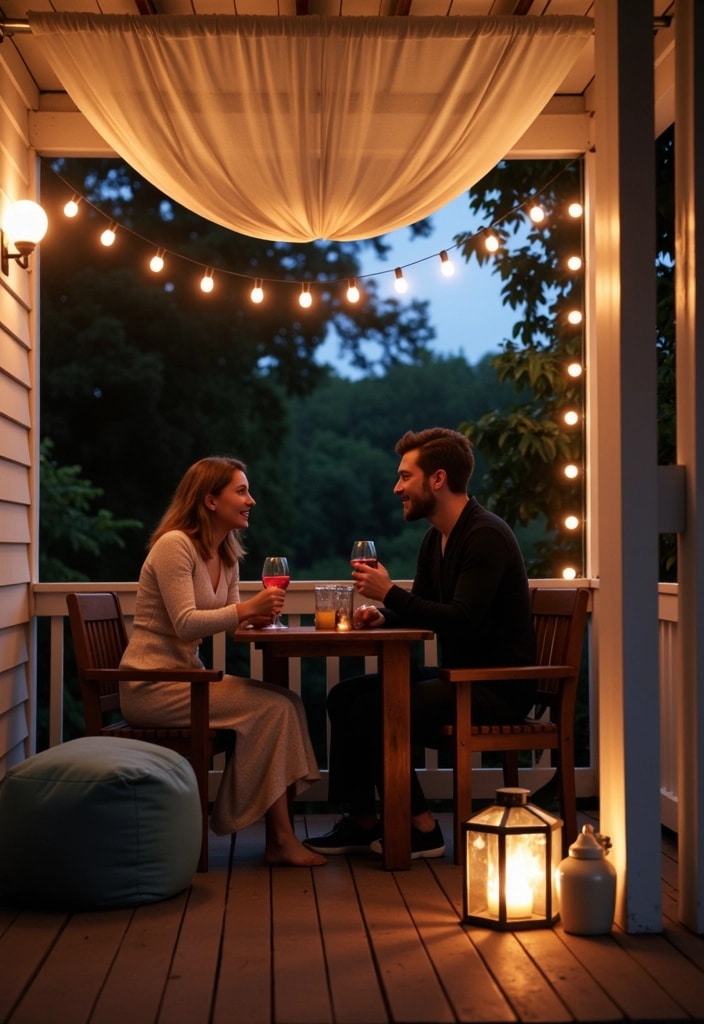
Poor lighting can make even large spaces feel cramped and unwelcoming. In small bedrooms, a strategic lighting plan with multiple sources at differen heights creates depth and dimension.
A well-designed small bedroom typically needs:
- Ambient lighting: Ceiling fixtures or recessed lights for overall illumination
- Task lighting: Reading lamps or adjustable sconces for specific activities
- Accent lighting: LED strips under shelving or behind headboards to highlight features
Wall-mounted swing-arm sconces save precious nightstand space while providing adjustable light exactly where needed. Install them at approximately 45 inches above the mattress height and 12 inches to either side of the headboard for optimal reading positioning.
Smart lighting has become increasingly affordable, with basic programmable bulbs starting around $15-20. These systems allow you to adjust color temperature and brightness throughout the day, making your space feel larger and more adaptable.
Window Treatment Strategies
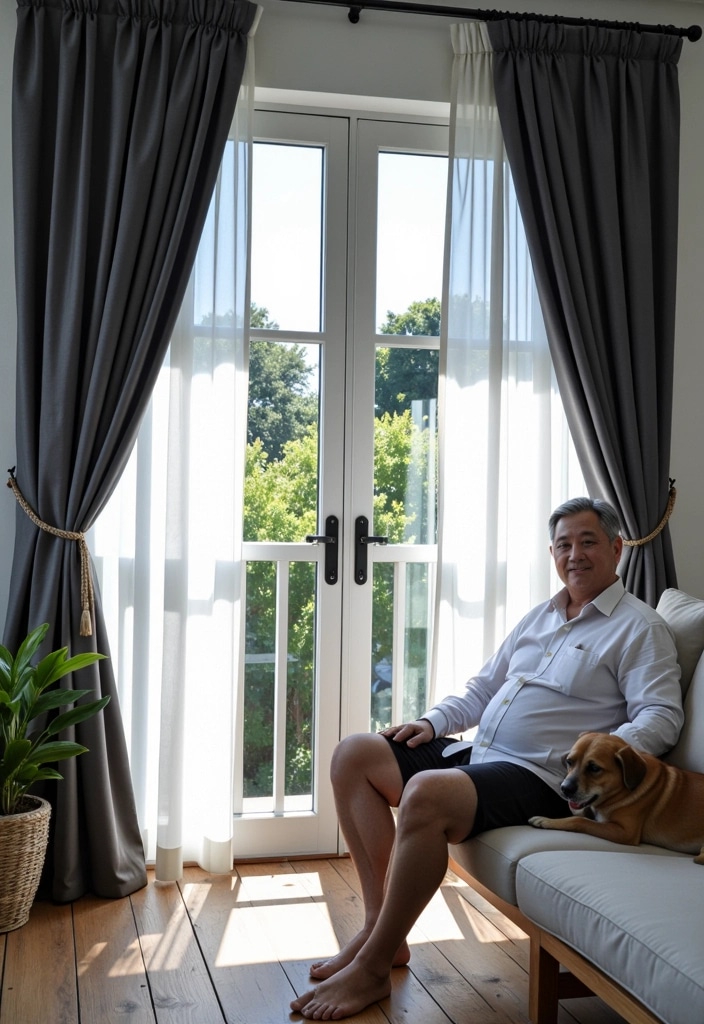
Windows are valuable in small spaces—both for natural light and the connection to the outside world they provide. To maximize their impact:
- Mount curtain rods 4-6 inches above the window frame and extend them 8-12 inches beyond the window’s width on each side
- Choose light-filtering fabrics that provide privacy without blocking light
- Consider bottom-up shades that allow light in from the top while maintaining privacy
- Use the same color for window treatments as walls to create visual continuity
For extremely small spaces, tension rods installed inside the window frame with light-filtering panels preserve every inch of wall space while still providing privacy.
Maximizing Hidden Storage
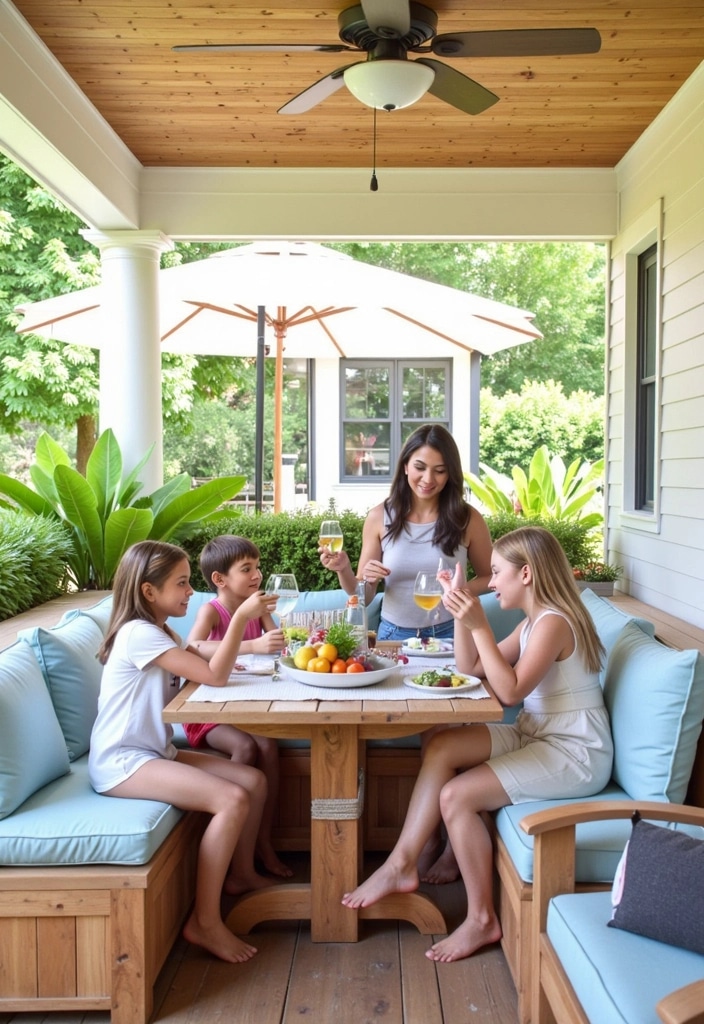
Under-Bed Storage Systems
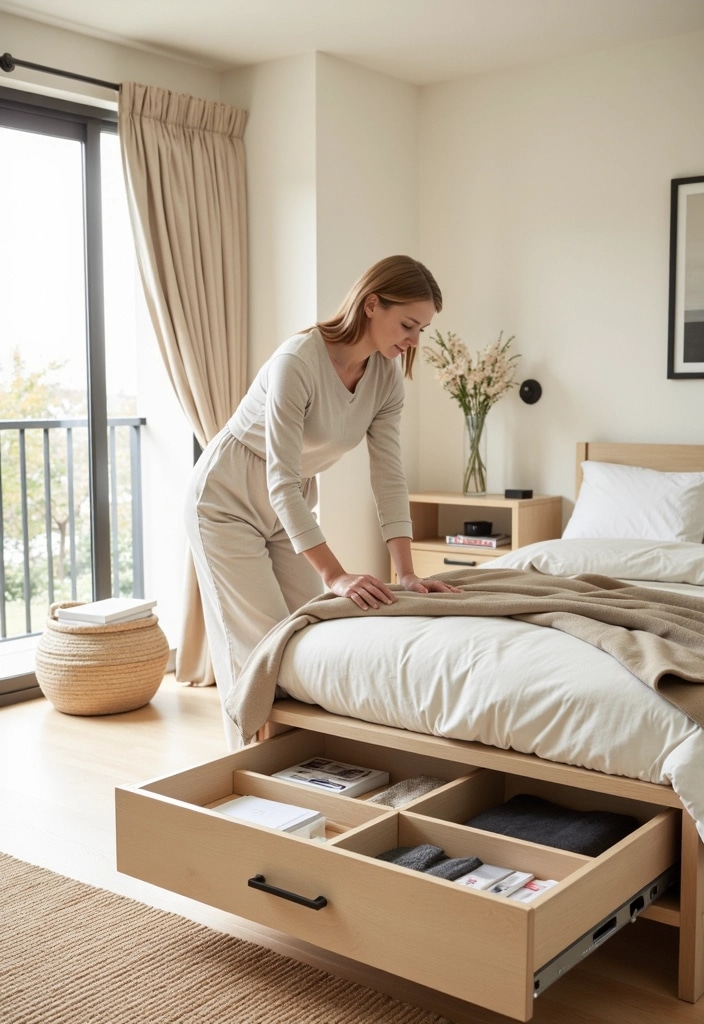
The space under a standard queen bed represents approximately 25 cubic feet of potential storage—equivalent to a small closet! Purpose-built under-bed storage comes in several forms:
- Wheeled drawers or bins for easy access ($30-150)
- Vacuum-sealed bags for seasonal items and bedding ($15-40 for sets)
- Purpose-built organizers with dividers for shoes or accessories ($25-100)
- Custom built-in drawers that look like part of the bed frame ($200-500)
Professional organizer Maya Wilson recommends: “Divide your under-bed storage into zones—one side for out-of-season clothing, another for extra bedding, and perhaps a special section for items you use somewhat regularly but not daily.”
Behind-Door Solutions
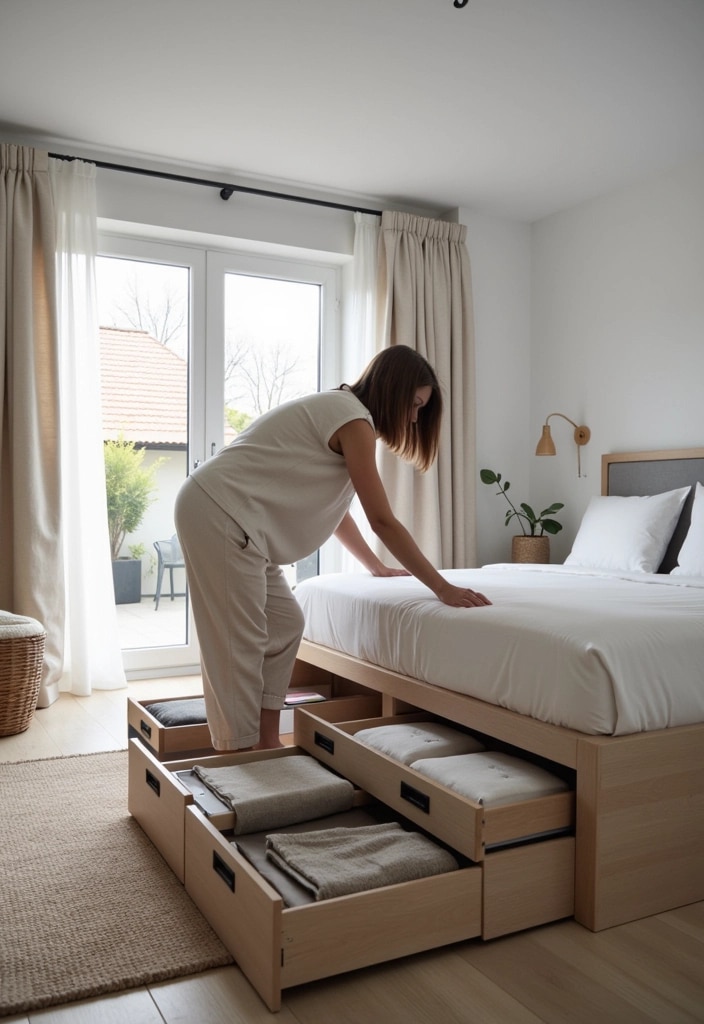
The back of your bedroom door offers 15-20 square feet of potential storage space that’s often completely overlooked. Beyond basic over-door hooks, consider these creative solutions:
- Multi-tier over-door organizers with adjustable pockets
- Custom-built shallow shelving (3-4 inches deep) mounted directly to the door
- Hanging canvas organizers with clear pockets for small items
- Specially designed jewelry or accessory organizers
For closet doors, consider replacing traditional hinged doors with space-saving alternatives like:
- Sliding barn doors (which require wall space to slide)
- Bifold doors (which require less swing space)
- Curtains on tension rods for a soft solution requiring zero door clearance
Dual-Purpose Decor Items
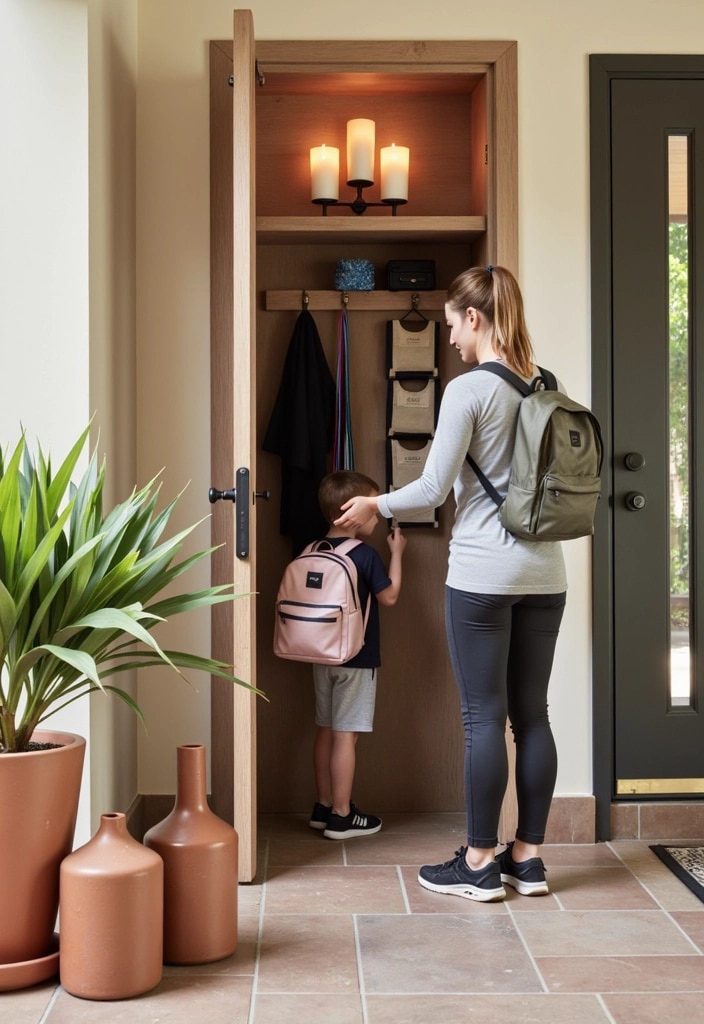
In small bedrooms, even decorative items should pull double duty. Look for pieces that offer hidden storage or additional functionality:
- Storage ottomans that serve as seating, tables, and storage
- Hollow decorative books that hide small valuables
- Bedside lamps with integrated shelving or USB charging ports
- Decorative baskets that organize while adding texture and warmth
“The key to making dual-purpose items look intentional rather than purely utilitarian is consistency,” advises stylist Chris Park. “Choose storage baskets in coordinating materials, select book-box hiders that match your color scheme, and opt for technology integrations that complement your overall aesthetic.”
Creating Distinct Zones
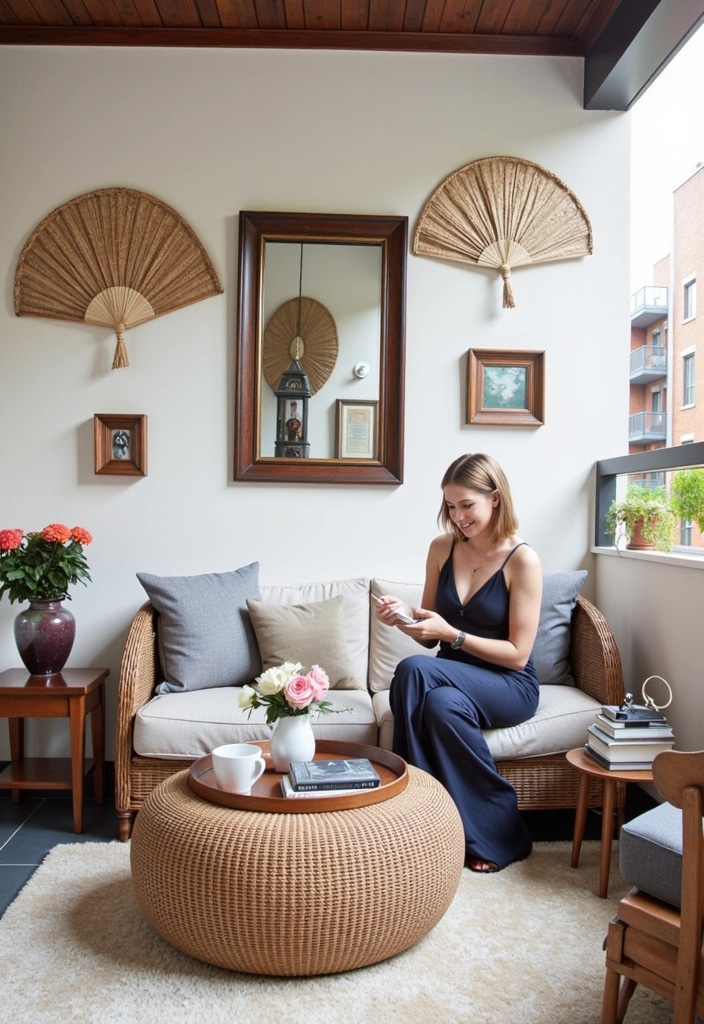
Cozy Reading Nooks in Tight Corners
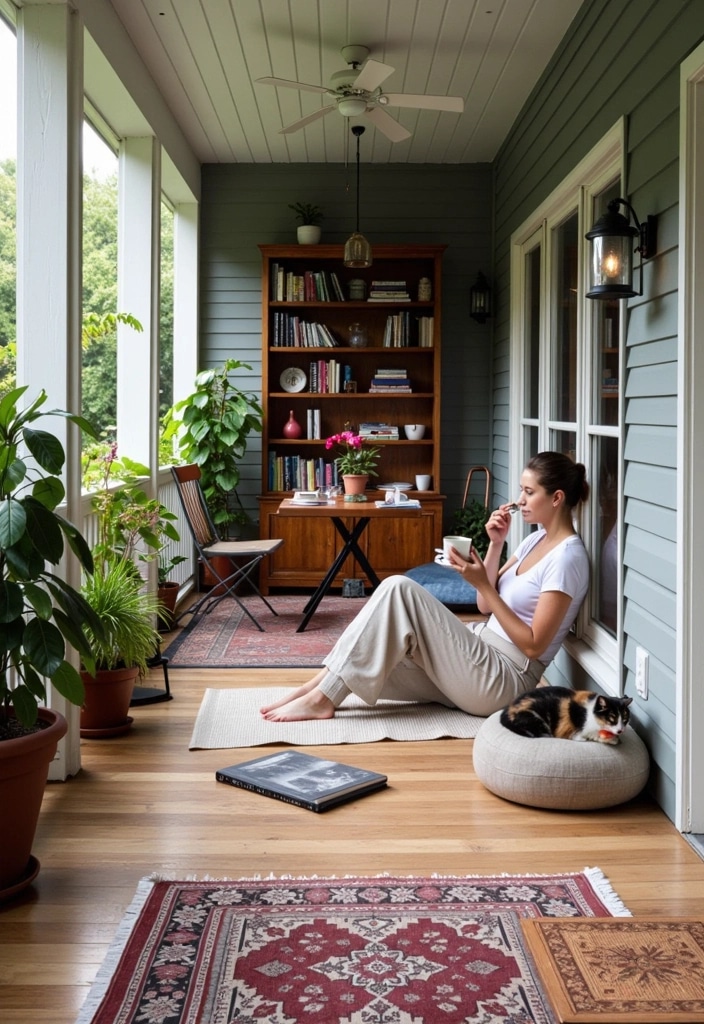
Even the smallest bedroom can incorporate a dedicated reading spot with thoughtful planning. The minimum space needed for a comfortable reading nook is just a 3×3-foot corner.
Space-efficient seating options include:
- Slipper chairs (armless designs about 18-24 inches wide)
- Floor cushions with supportive back pillows
- Wall-mounted fold-down seats
- Window seats that utilize existing architectural features
Essential elements for a perfect reading nook:
- Task lighting positioned to illuminate your book without causing glare
- A small side surface for a drink or to rest your book
- A soft throw blanket for comfort
- Easy access to a few favorite books or an e-reader
Compact Work Stations
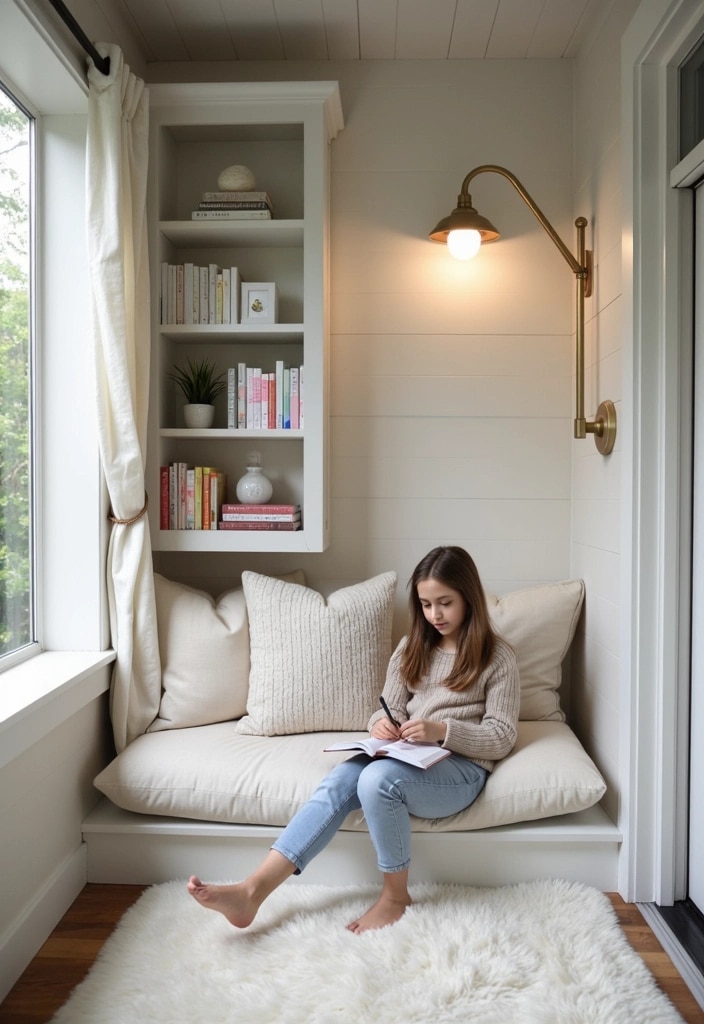
With more people working from home, bedroom workspaces have become increasingly important. A functional work area can fit in as little as a 30×20-inch footprint when designed efficiently.
Space-saving desk solutions include:
- Wall-mounted folding desks that disappear when not in use ($100-300)
- Converting writing desks with minimal footprints (24-30 inches wide)
- Nightstand/desk hybrids that serve dual purposes
- Rolling carts that can be tucked away when not needed
“Cable management becomes even more crucial in small workspaces,” notes tech organizer Sam Becker. “Use cord clips, cable sleeves, and wireless peripherals whenever possible to prevent visual clutter that makes the space feel cramped.”
Dressing Areas in Minimal Square Footage
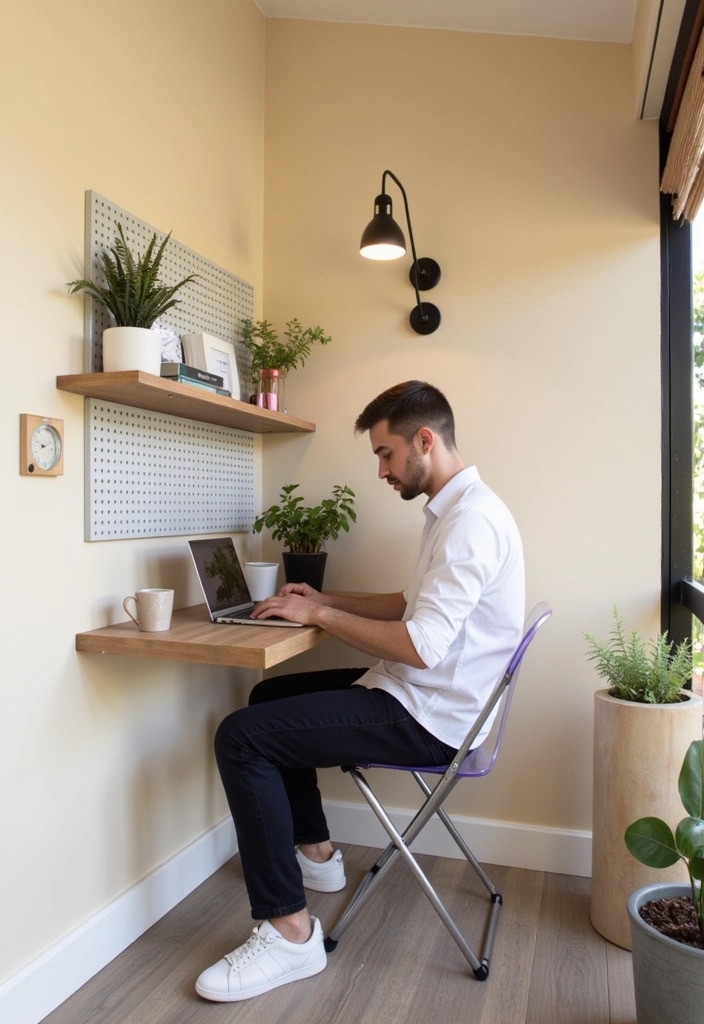
Creating a dedicated dressing zone helps contain clothing clutter and streamlines morning routines. Even without a walk-in closet, you can create a functional dressing area in just a few square feet.
Key components of a space-efficient dressing area:
- A wall-mounted or over-door full-length mirror
- A small surface for daily accessories
- Hooks or a compact valet stand for outfit planning
- Focused lighting that accurately renders colors
For shared bedrooms, a decorative folding screen can provide privacy while adding visual interest to the room. Modern room dividers are available in widths as narrow as 48 inches and can be folded away when not needed.
Finishing Touches

Strategic Use of Textiles

Textiles add warmth and personality to small bedrooms while helping define spaces and absorb sound. In limited square footage, textiles must be chosen strategically:
- Opt for low-pile rugs that won’t trap dust or catch on furniture
- Choose lightweight, washable curtains that move easily
- Select bedding with minimal bulk but maximum texture
- Consider acoustic curtains or panels to improve sound quality
Interior stylist Hannah Greene observes, “In small spaces, textiles with subtle patterns or textures work better than bold prints, which can quickly overwhelm the room. Save strong patterns for smaller accents like throw pillows or a single statement piece.”
Plants for Small Spaces
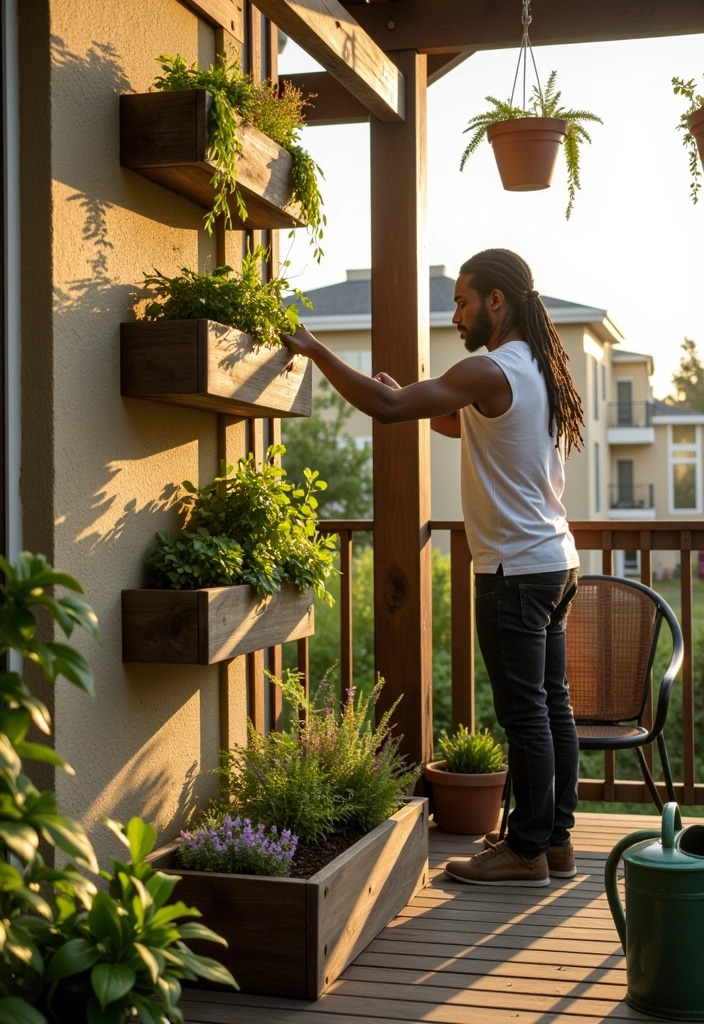
Research shows that indoor plants can reduce stress levels and improve air quality—benefits particularly valuable in small bedrooms. For limited space, consider these varieties that thrive in bedroom conditions:
- Snake plants: Require minimal light and purify air even at night
- Pothos: Can be trained to grow along walls or shelving
- Air plants: Need no soil and can be mounted on walls or suspended
- ZZ plants: Nearly indestructible and tolerate low light conditions
Space-saving display options include:
- Wall-mounted planters that take up zero floor space
- Magnetic or suction planters for windows
- Hanging planters from ceiling hooks
- Narrow plant stands that fit in tight corners
Personal Touches Without Clutter
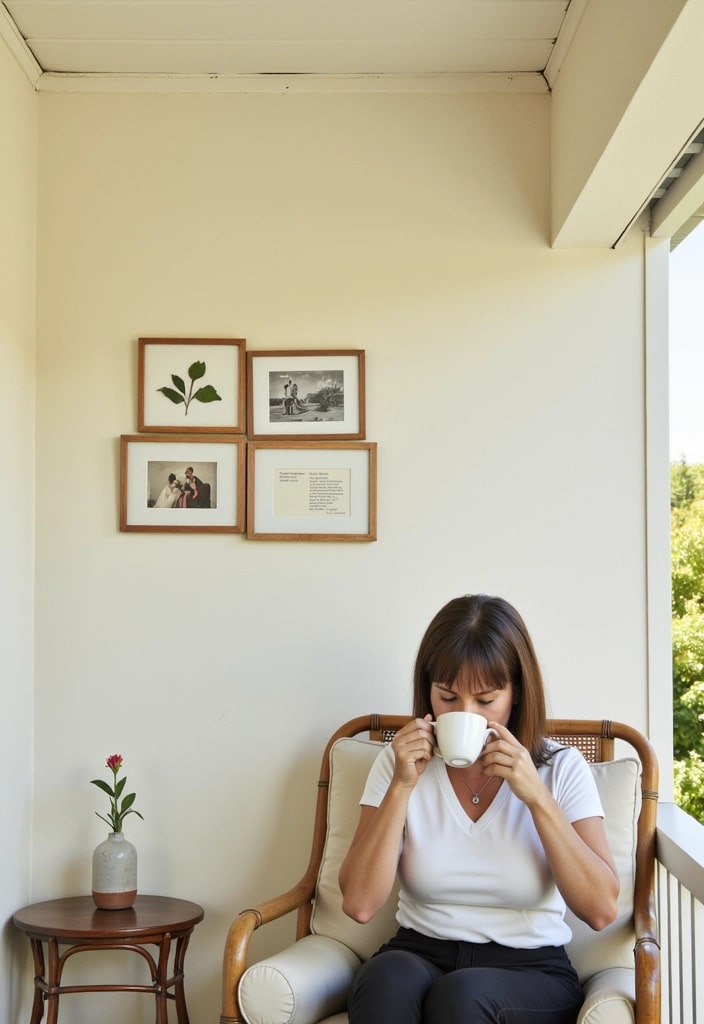
Expressing your personality is essential for making any bedroom feel like home, but in small spaces, curating is key. Rather than displaying entire collections, rotate favorite pieces seasonally.
Gallery walls maximize vertical space while keeping surfaces clear. For small bedrooms, tighter arrangements with frames of similar colors create cohesion without overwhelming the space. Professional framers recommend leaving 1.5-2 inches between frames for small gallery arrangements rather than the standard 3-4 inches used in larger spaces.
Digital solutions for memorabilia include:
- Digital photo frames that rotate hundreds of images
- Shadowbox frames with changeable contents
- Photo books that store hundreds of memories in a single volume
- Cloud-based albums accessible via tablet or smartphone
Maintaining Your Small Space
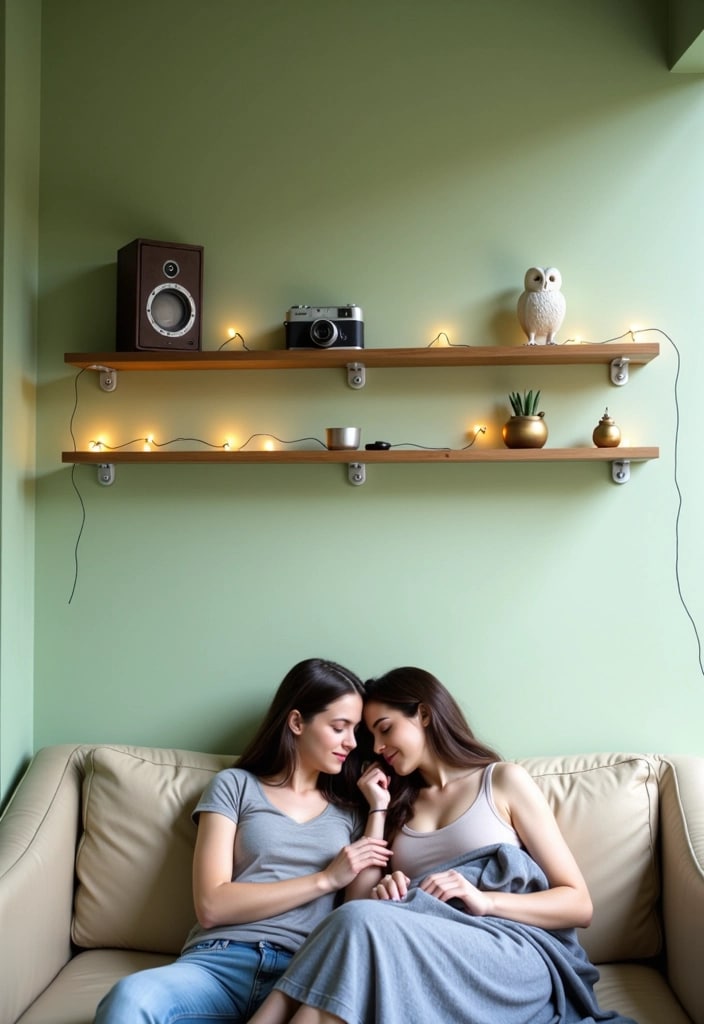
Small bedrooms require consistent maintenance to remain functional and peaceful. Developing these habits will help preserve the efficiency of your design:
- Daily reset routine: Spend 5 minutes before bed returning items to their designated homes
- One-in-one-out policy: For every new item you bring in, remove something else
- Seasonal rotation: Store off-season clothing and bedding in under-bed containers
- Quarterly reassessment: Review what’s working and what isn’t in your space
Professional organizer Beth Penn recommends the “visibility test” for small spaces: “If you can’t see at least some empty space on most surfaces and in most storage areas, it’s time to reassess what you’re keeping and why.”
Conclusion
Creating a cozy, stylish, and functional small bedroom isn’t about sacrificing what you love—it’s about being intentional with every design choice. By maximizing vertical space, choosing multi-functional furniture, using visual tricks to expand the space, and maintaining organized systems, even the tiniest bedroom can become a sanctuary.
Remember that small spaces have advantages too: they’re more economical to decorate, faster to clean, and often feel more secure and cozy than vast rooms. As architect Sarah Susanka wrote in her bestselling book The Not So Big House, “It’s not about how much space you have, but how you experience the space you have.”
Which of these small bedroom ideas will you try first? The beauty of working with small spaces is that even minor changes can have major impacts on both functionality and feeling.
Additional Resource
- Use tension rods and command strips for damage-free installations
- Invest in free-standing storage that can move with you
- Consider furniture slipcovers as an alternative to new purchases
- Use peel-and-stick wallpaper or fabric for temporary wall treatments
- Focus on lighting upgrades with plug-in options rather than hardwired fixtures
Measurement Guide for Small Bedroom Furniture
By thoughtfully implementing these ideas, your small bedroom can become not just a place to sleep but a multifunctional haven that supports rest, work, storage, and personal expression—all while feeling spacious and serene.
